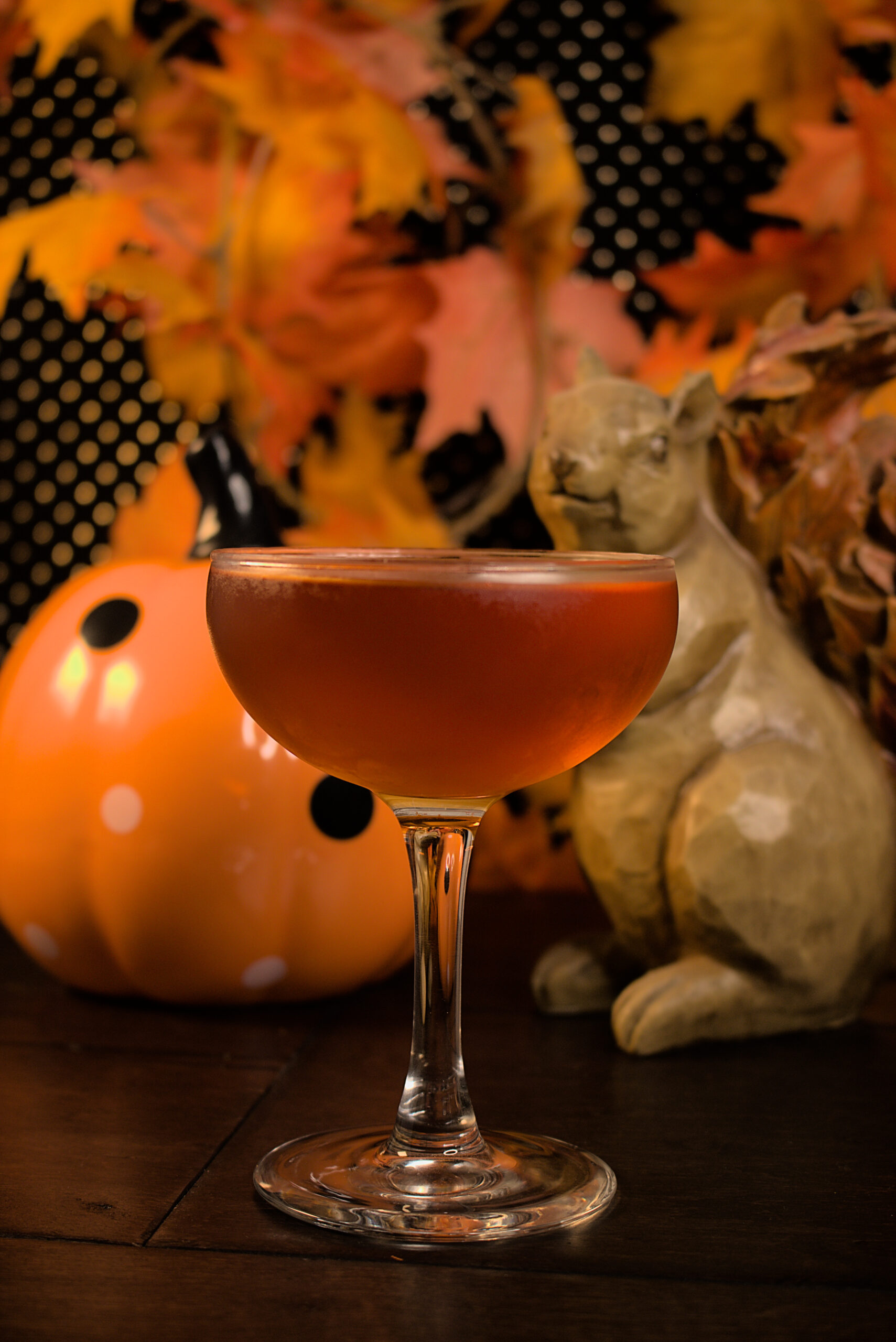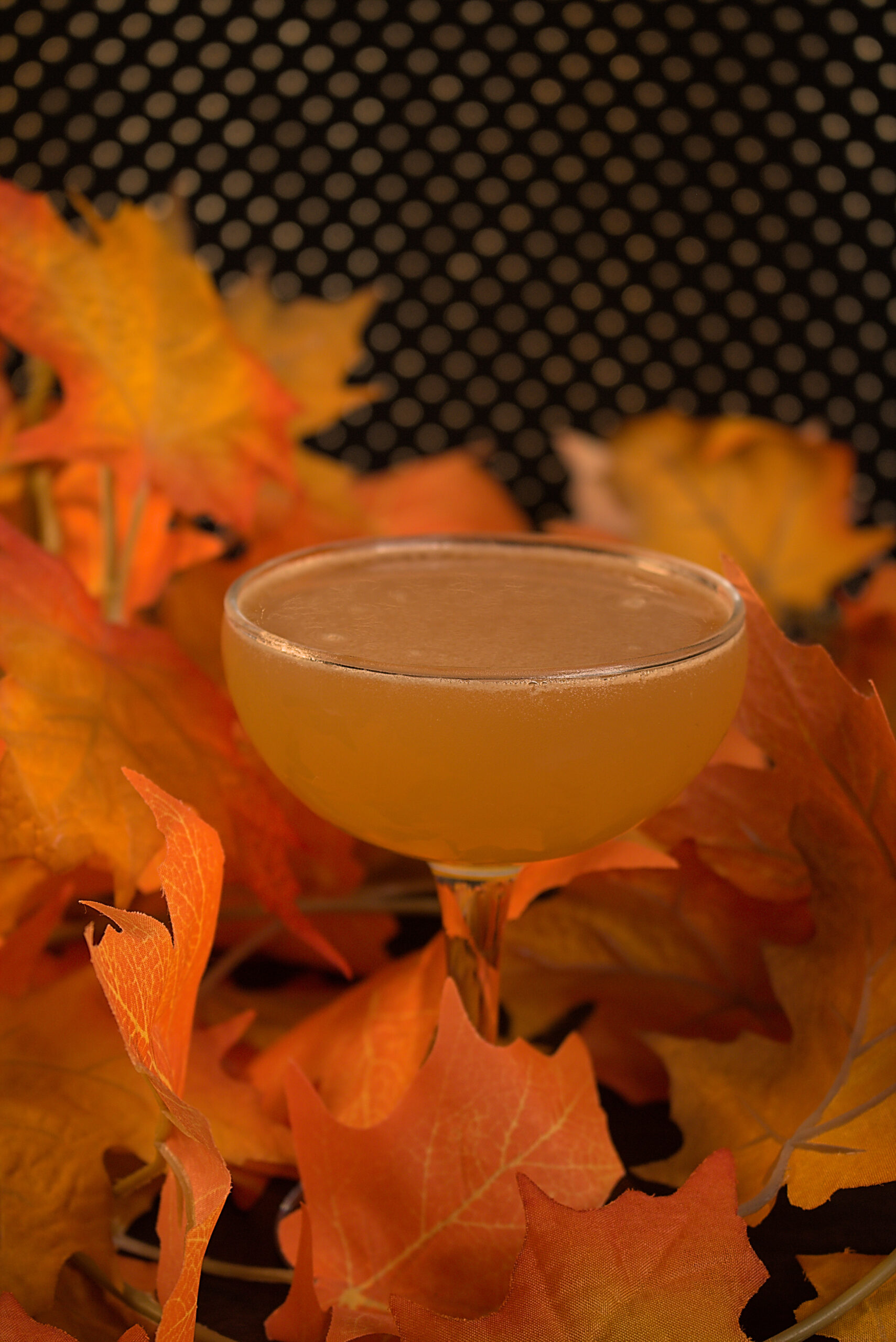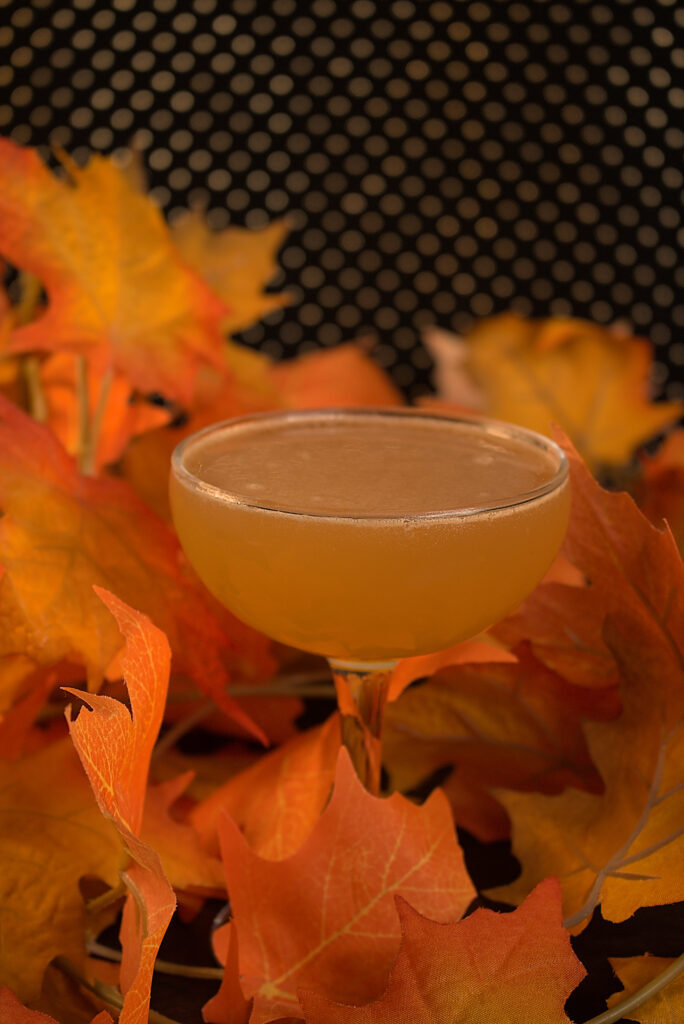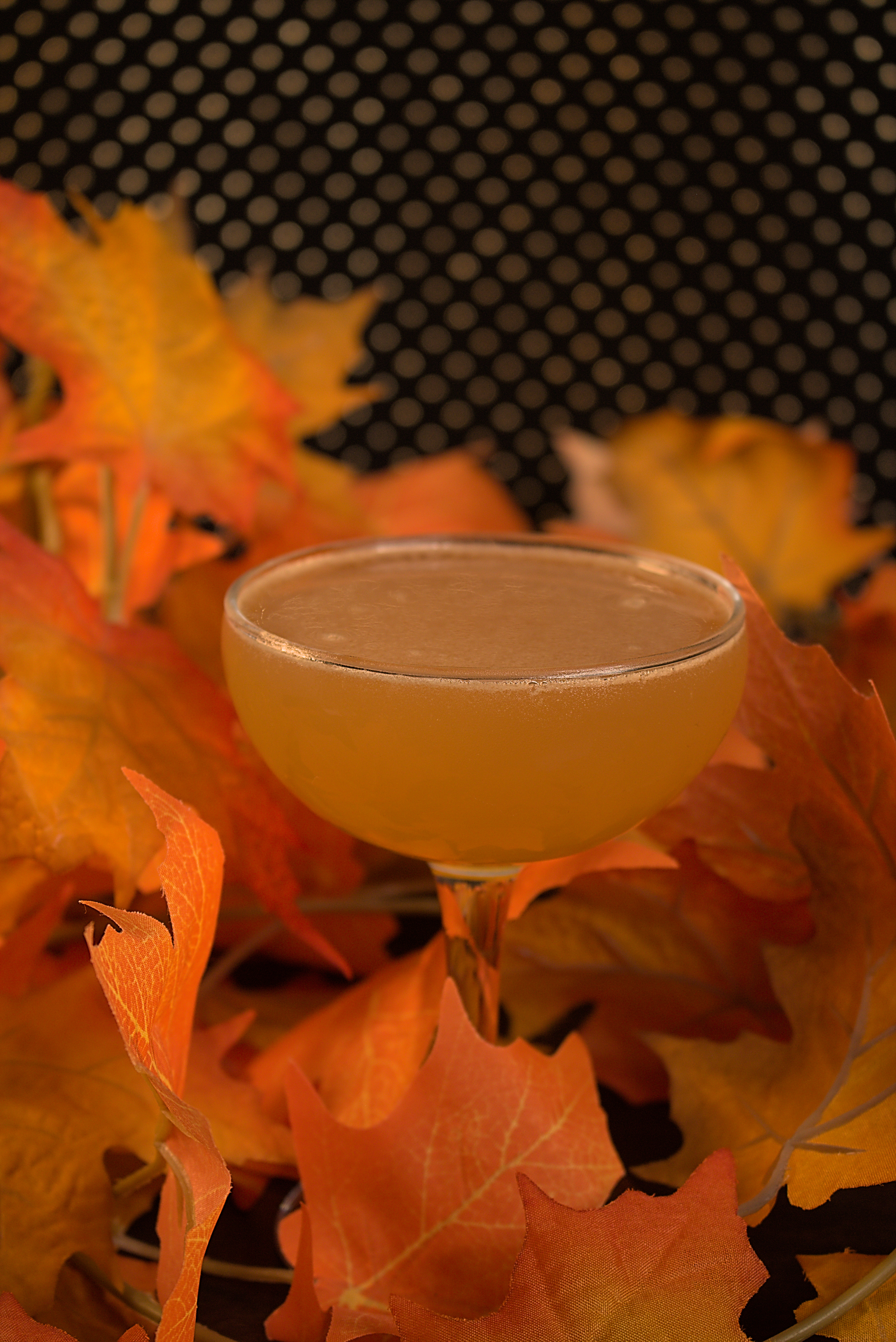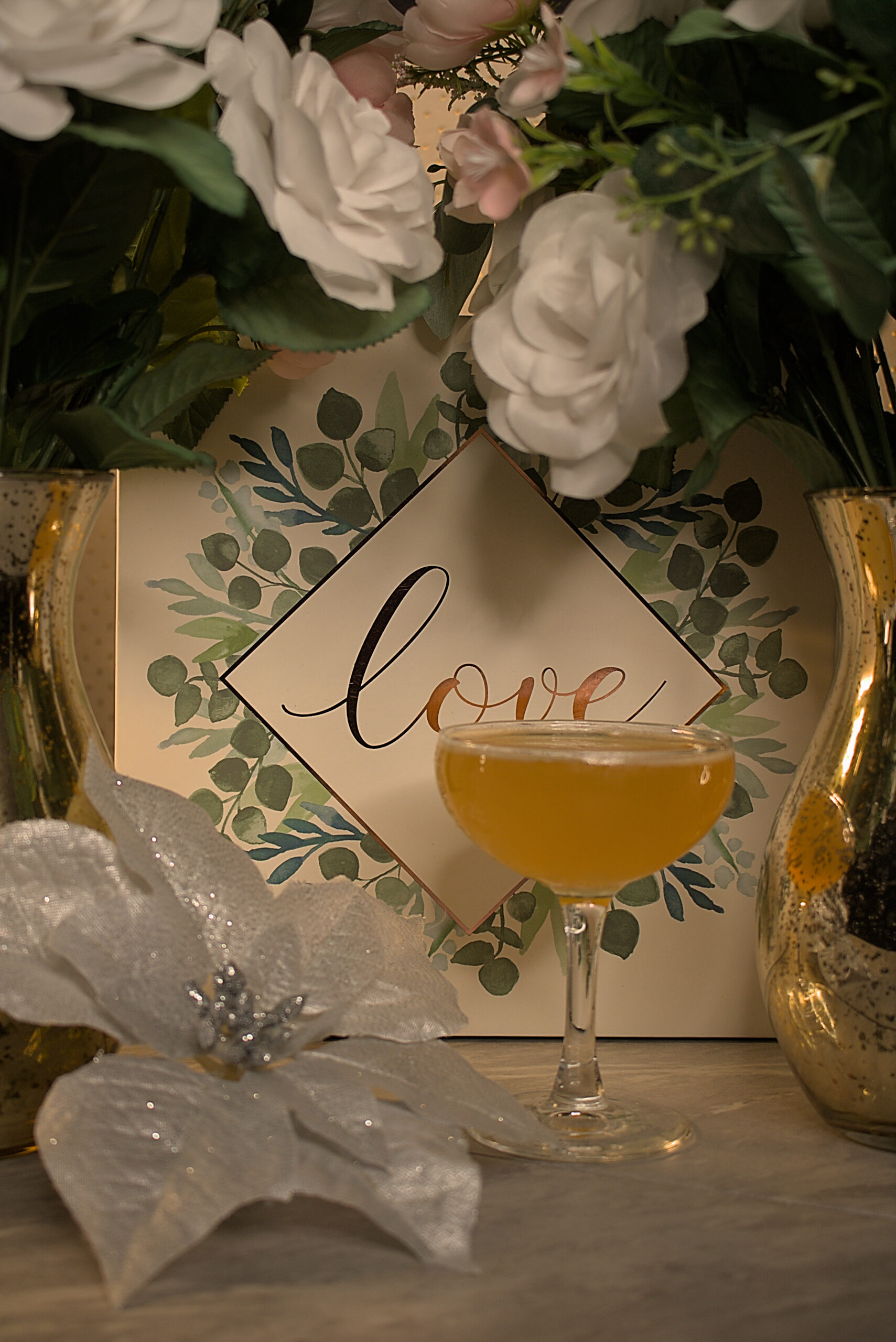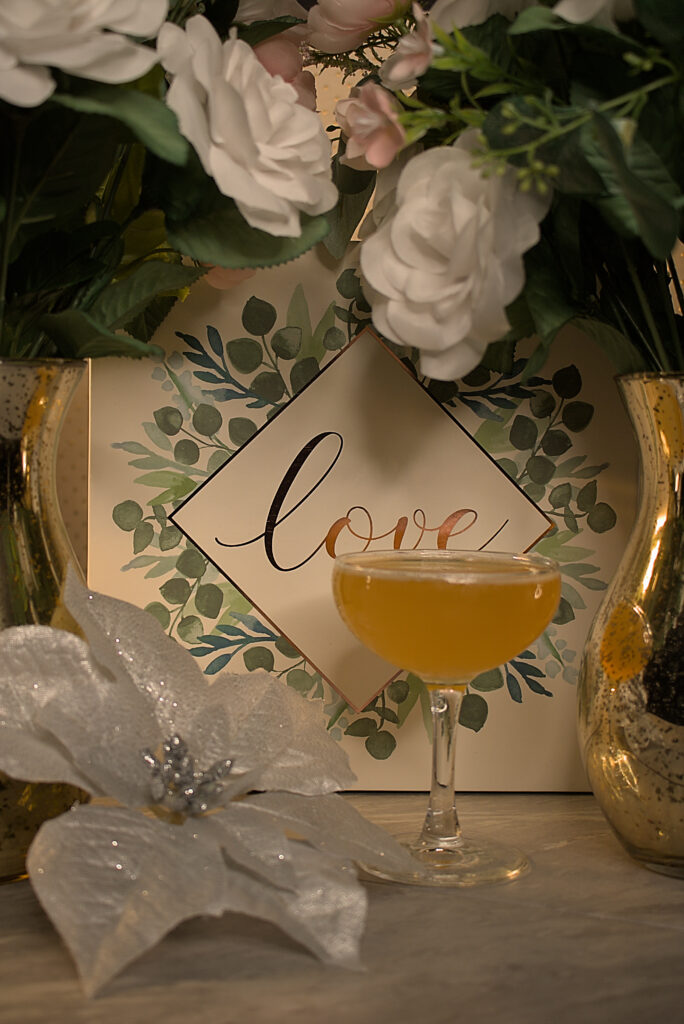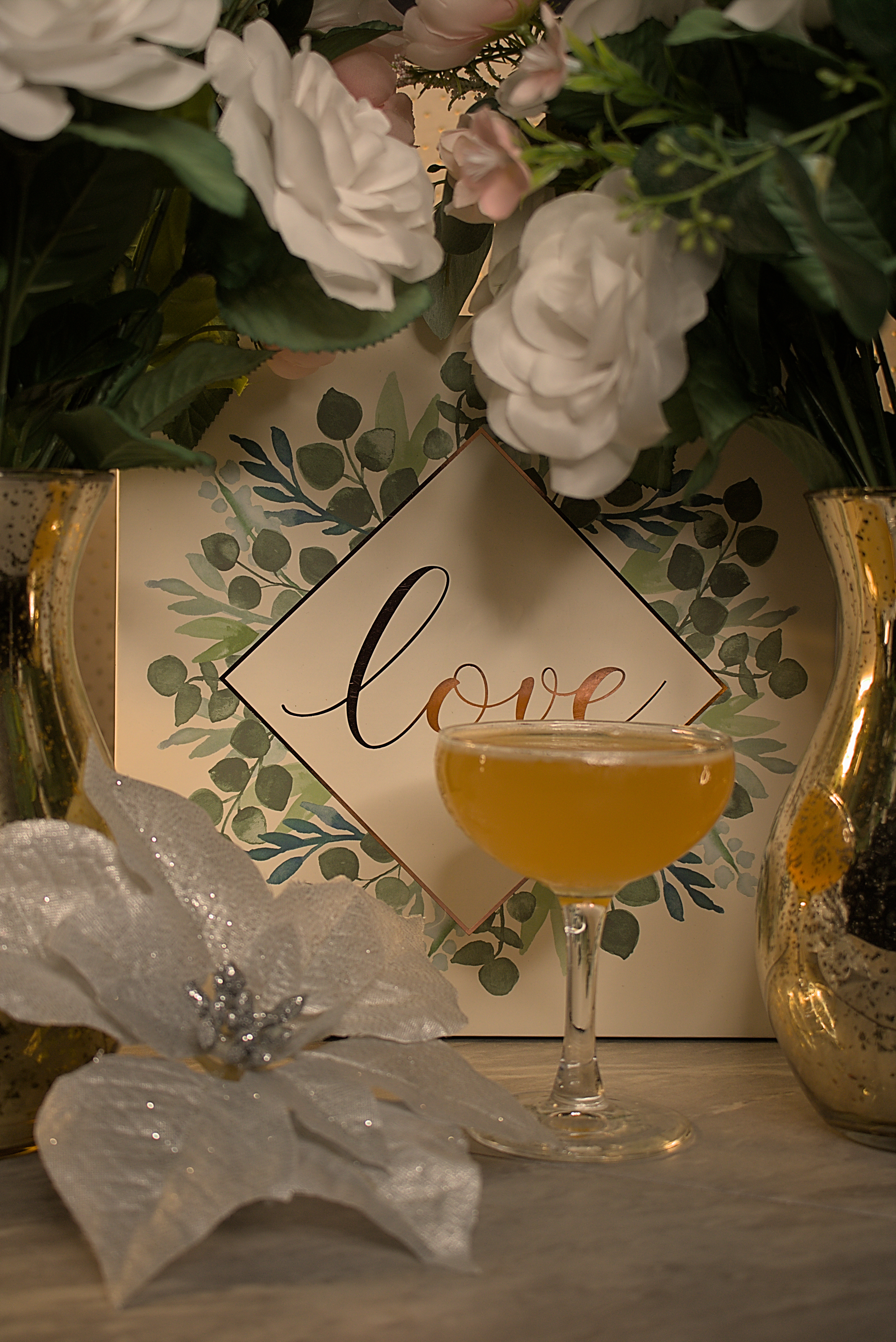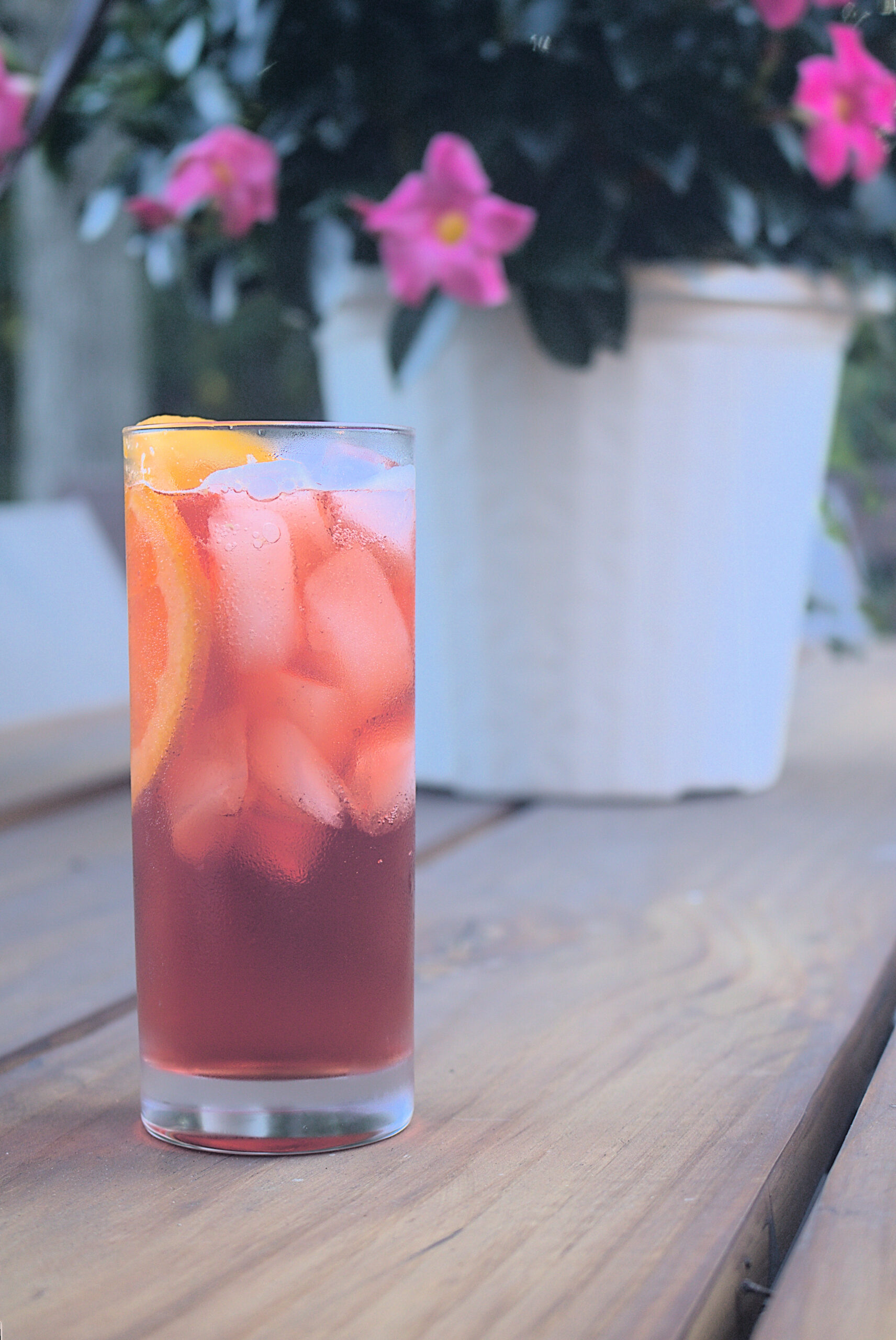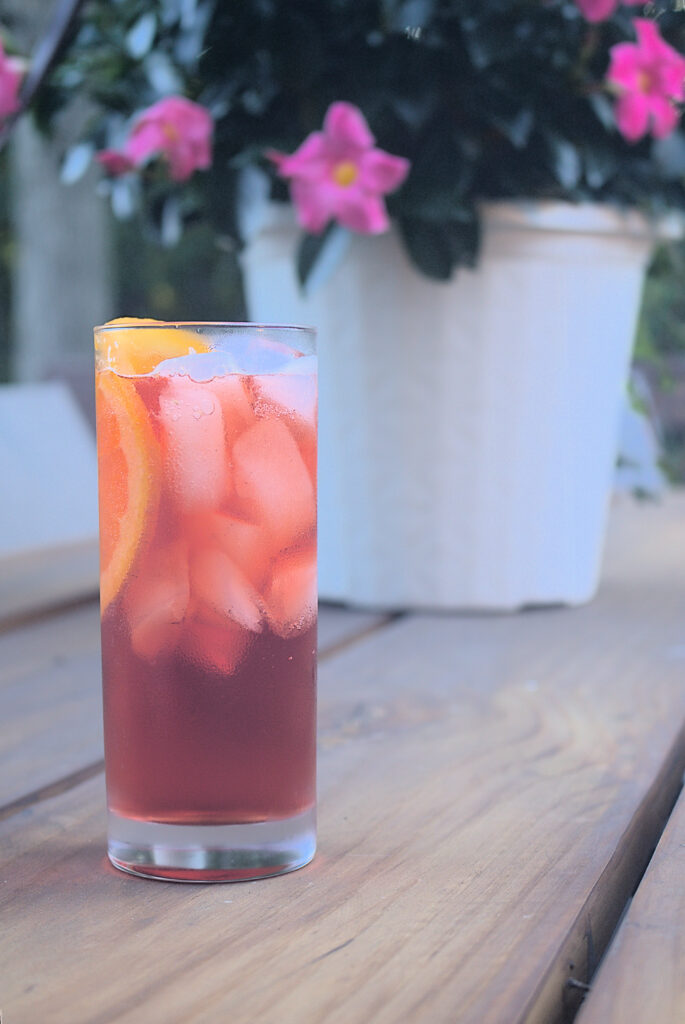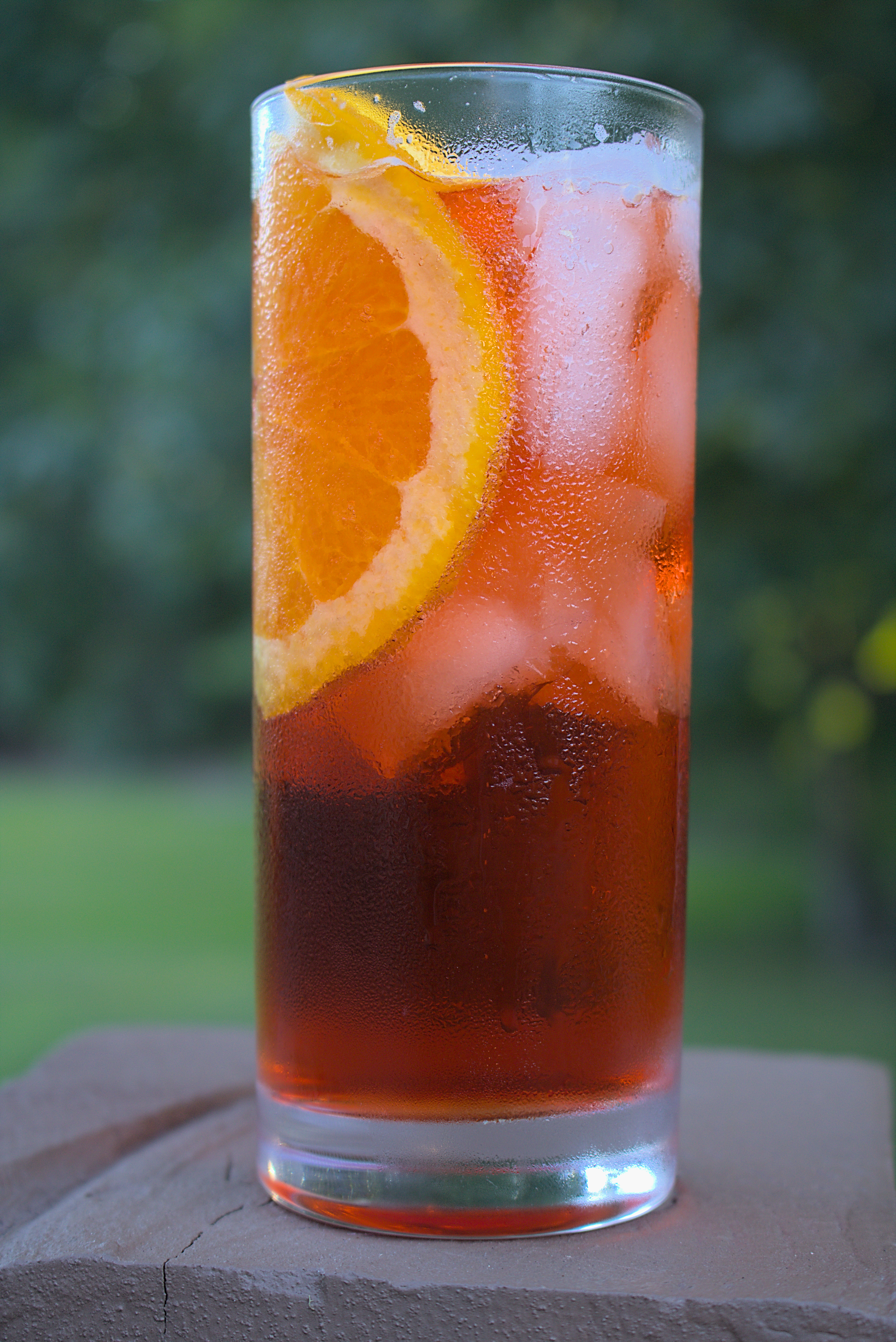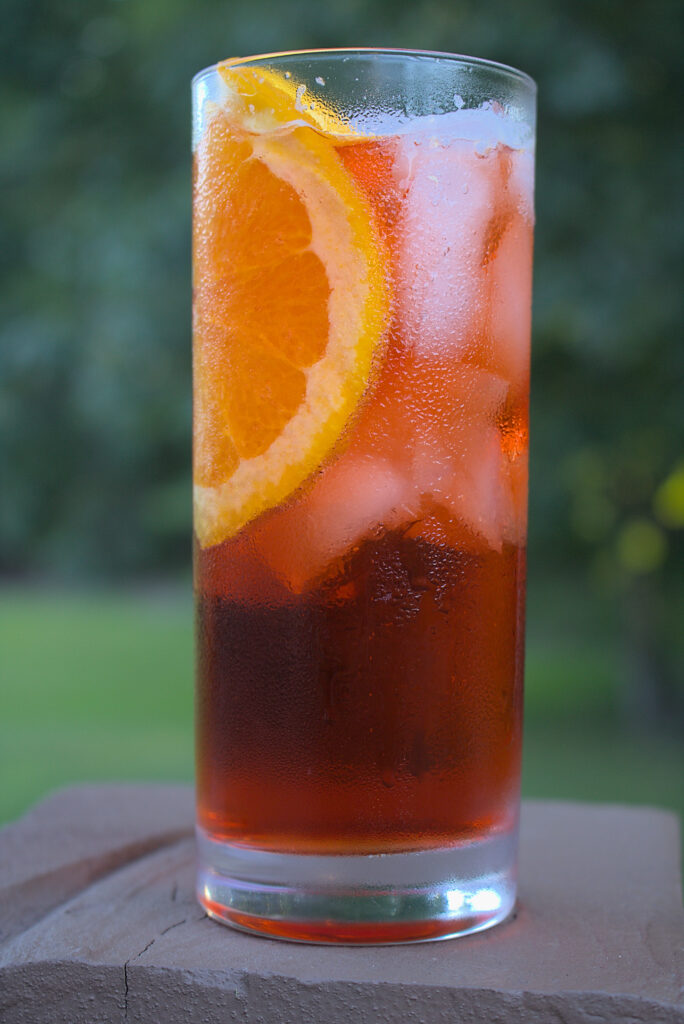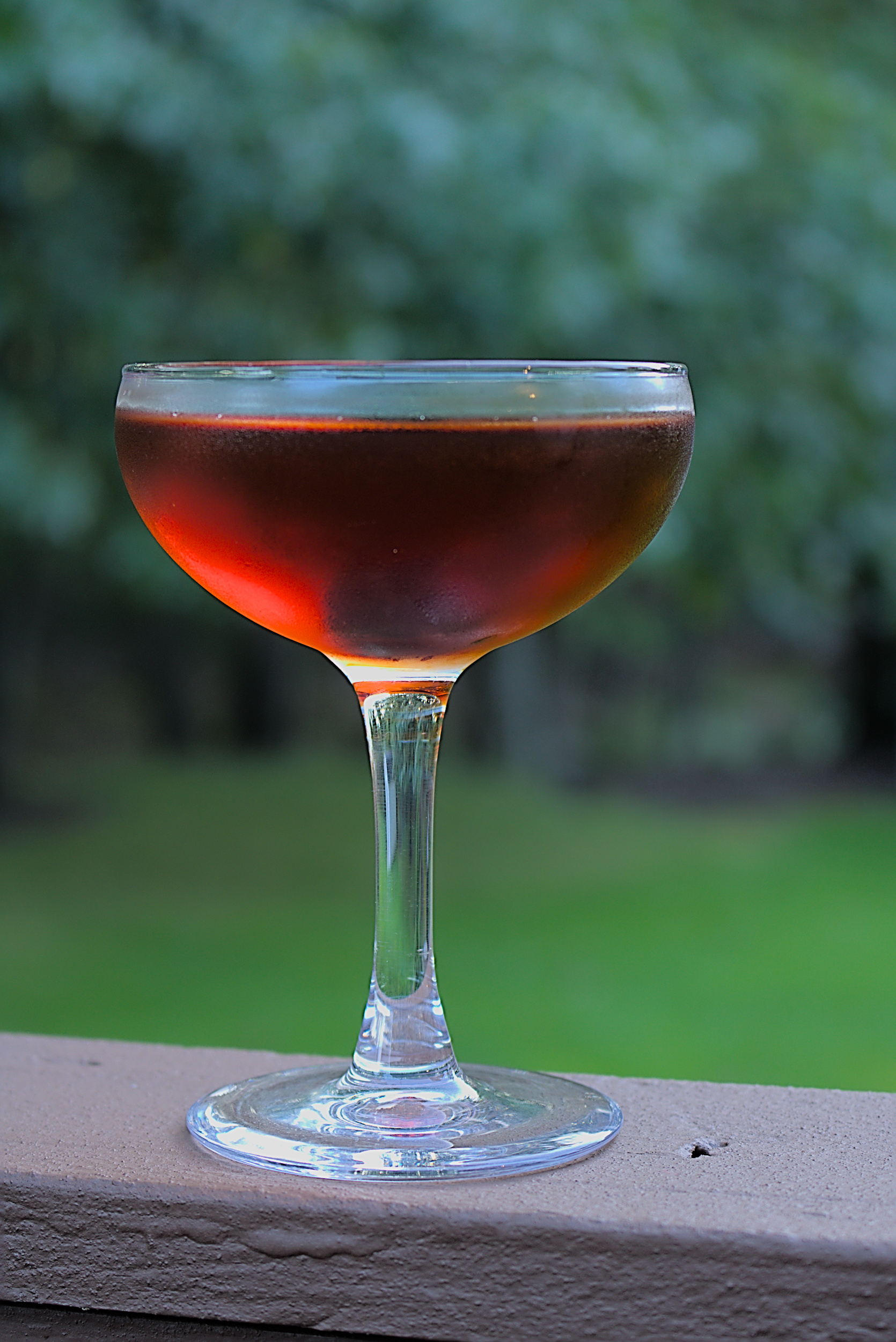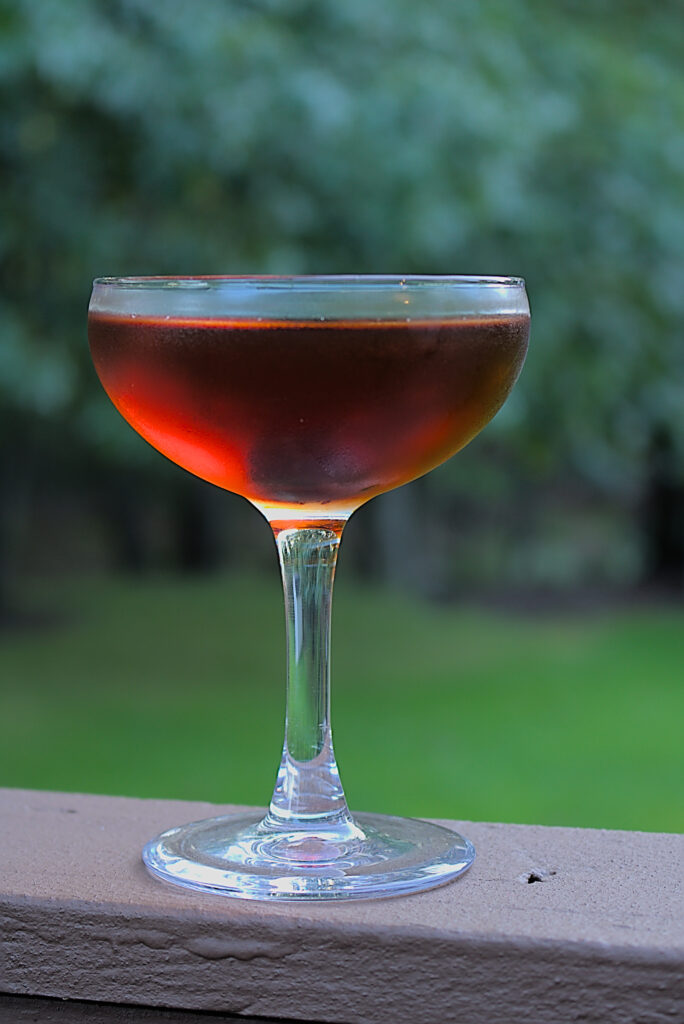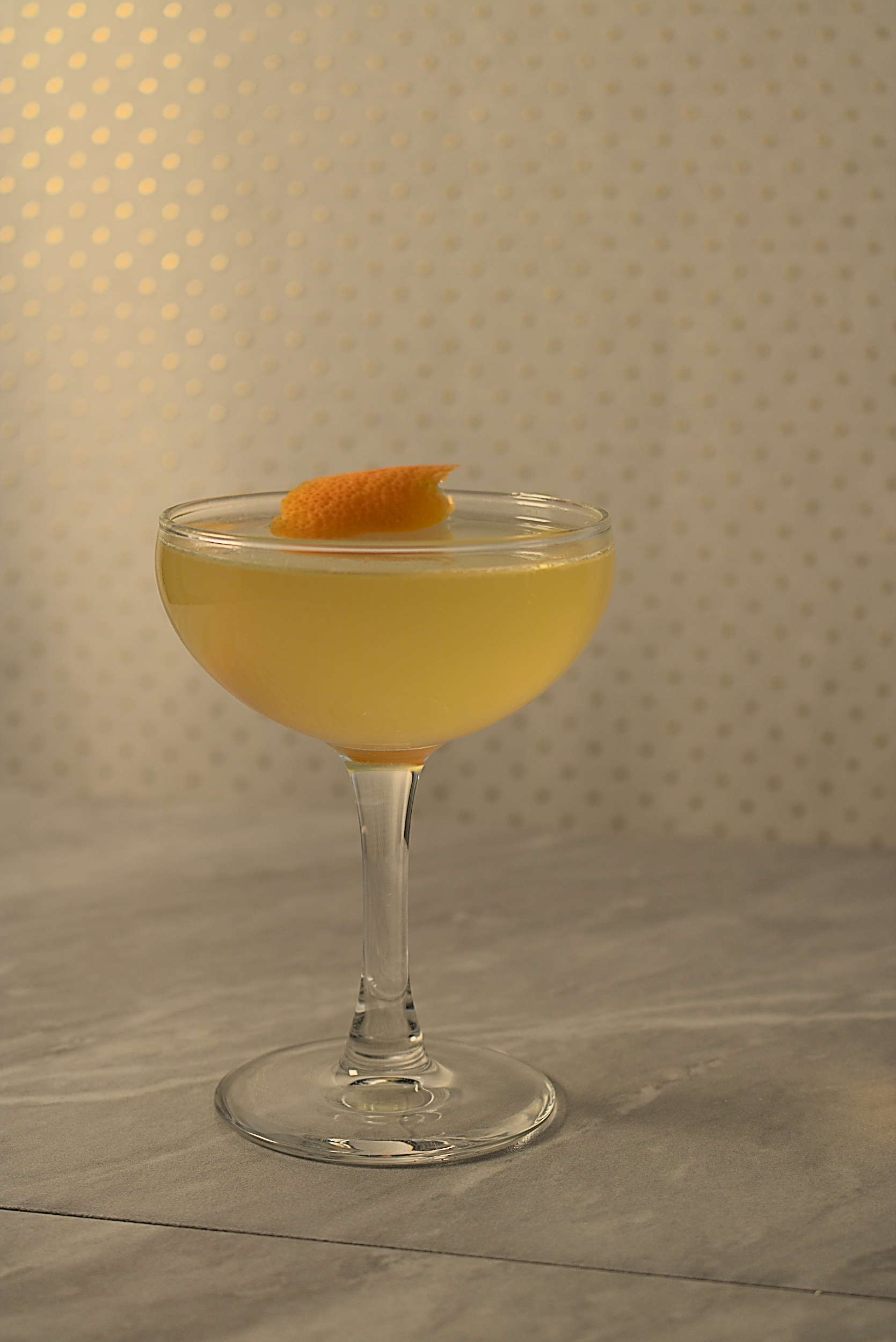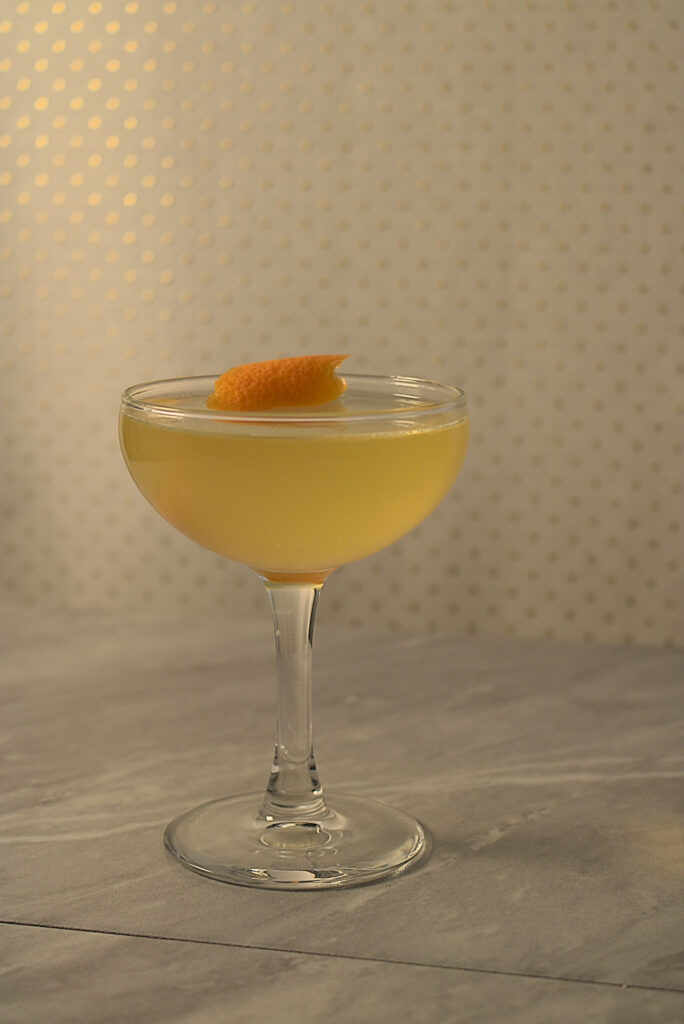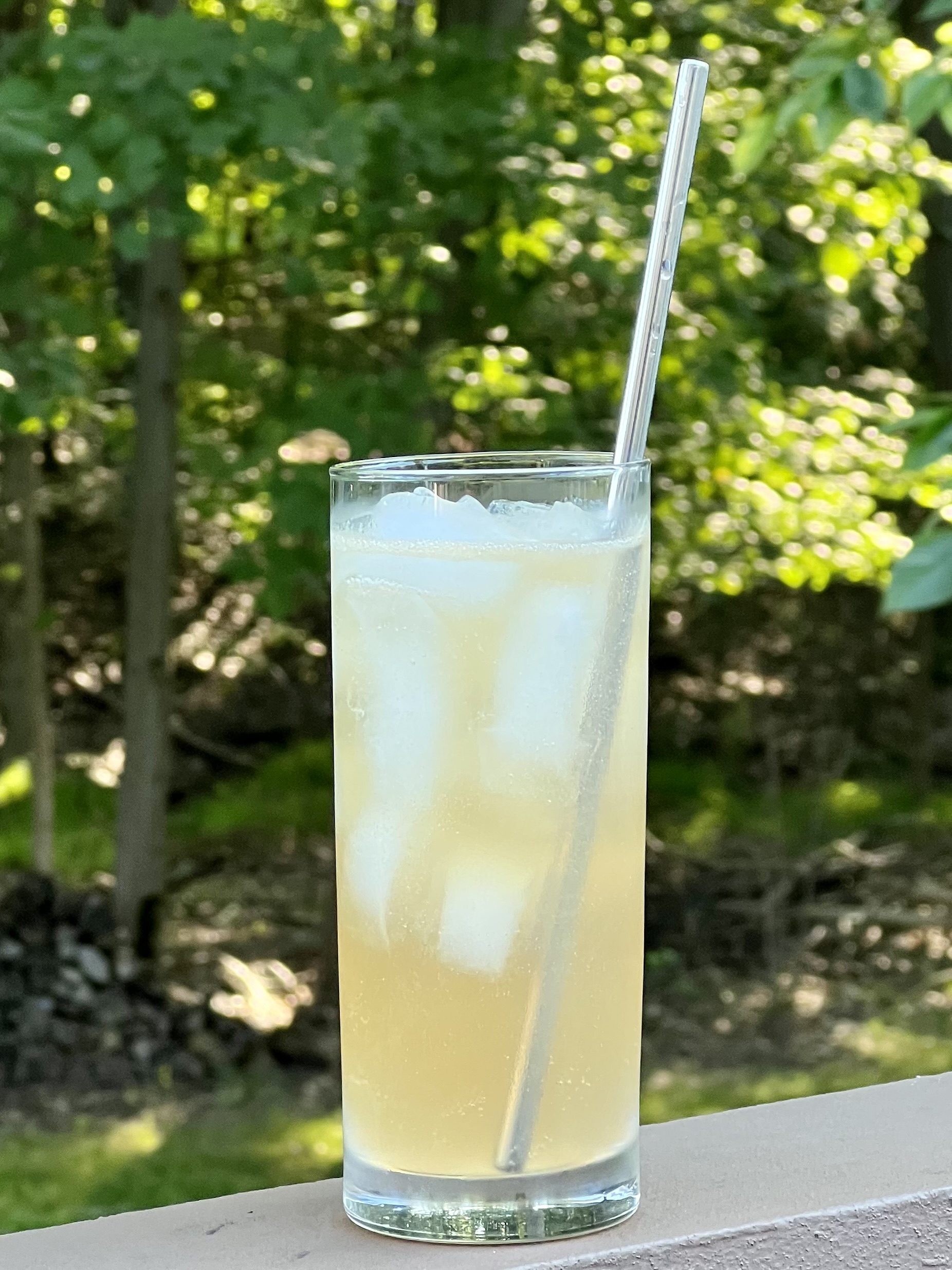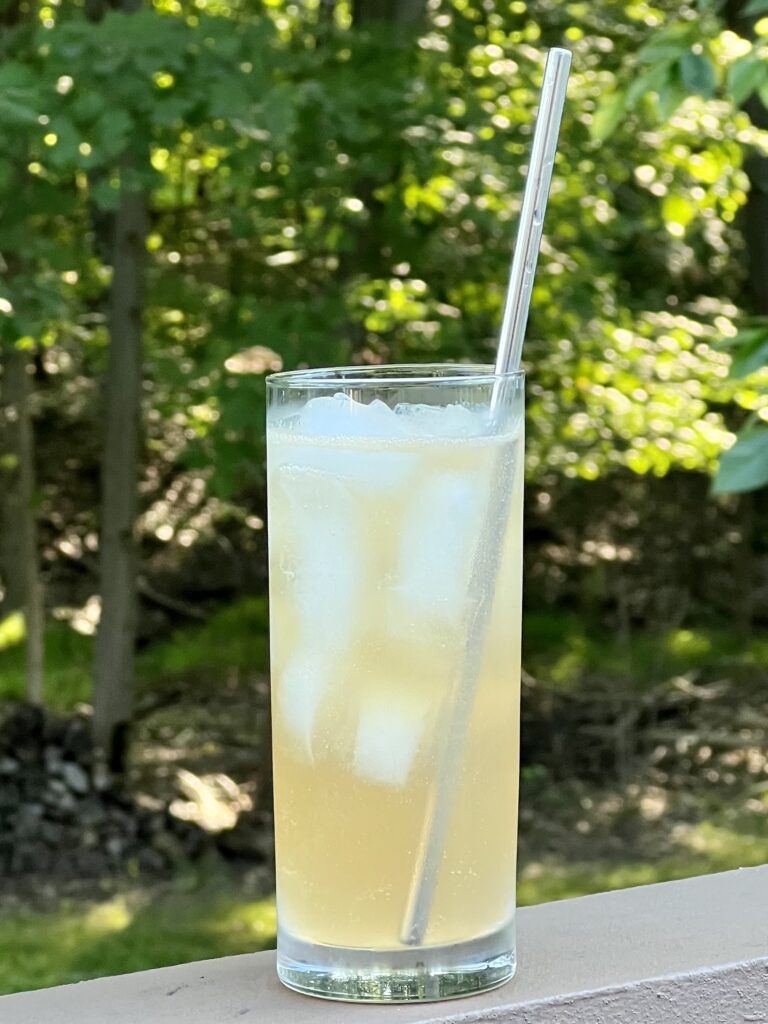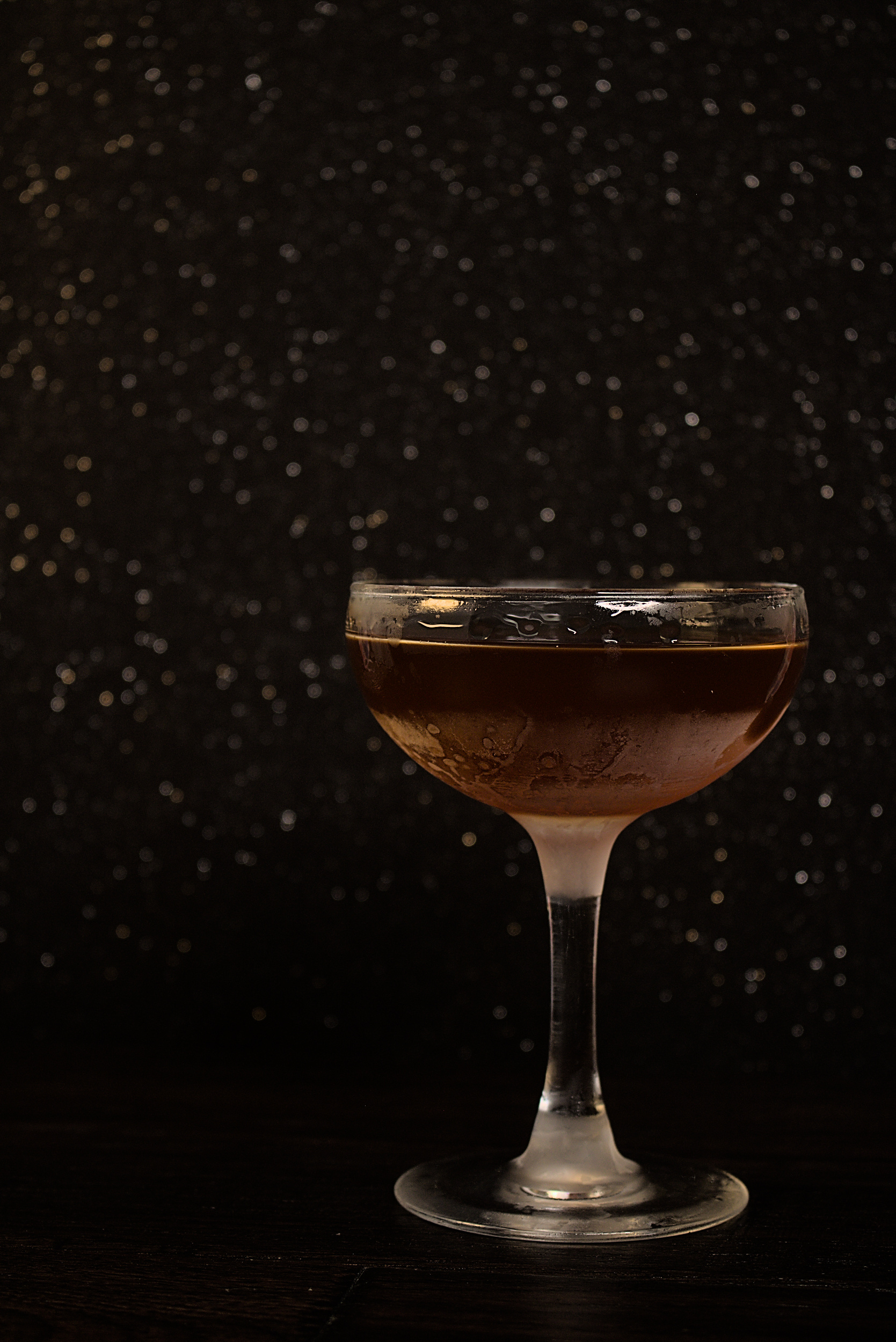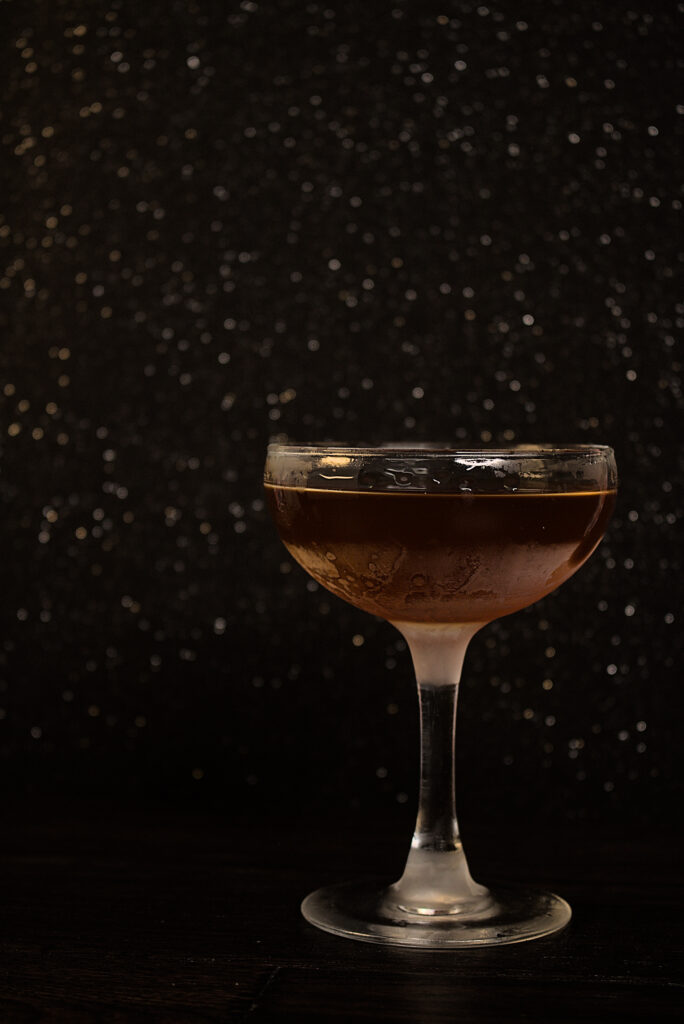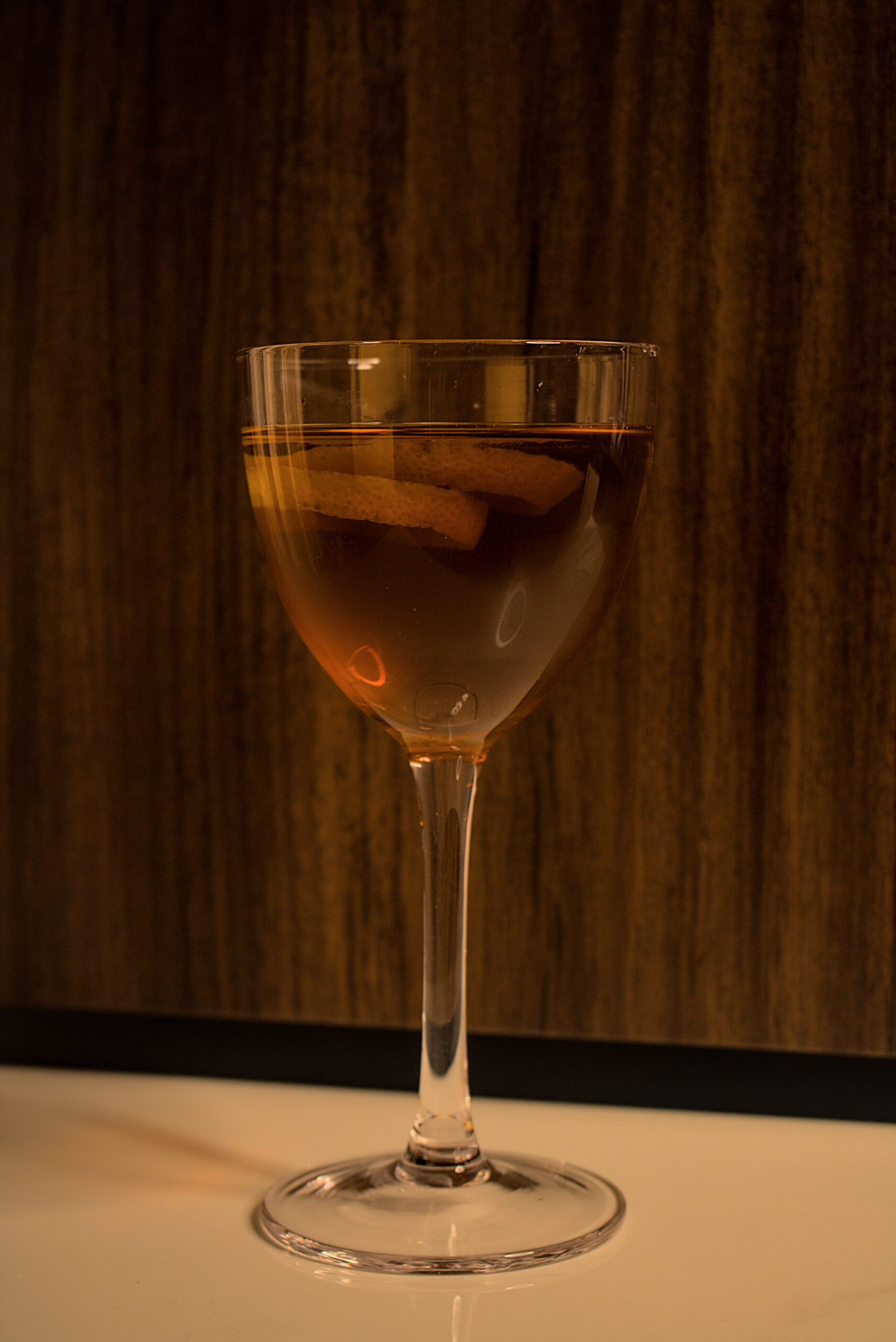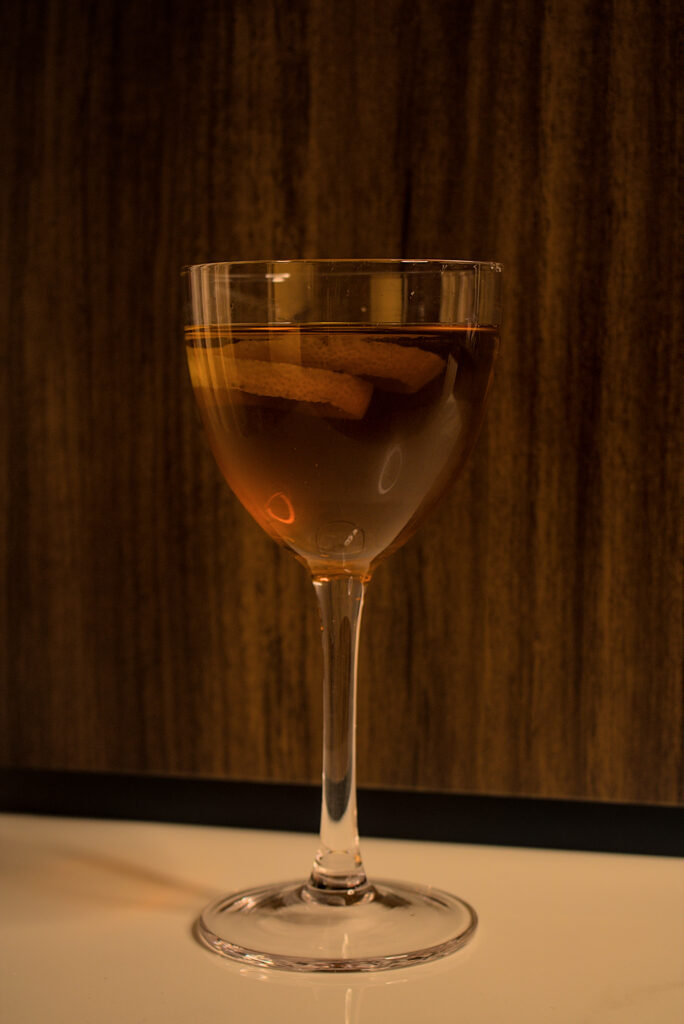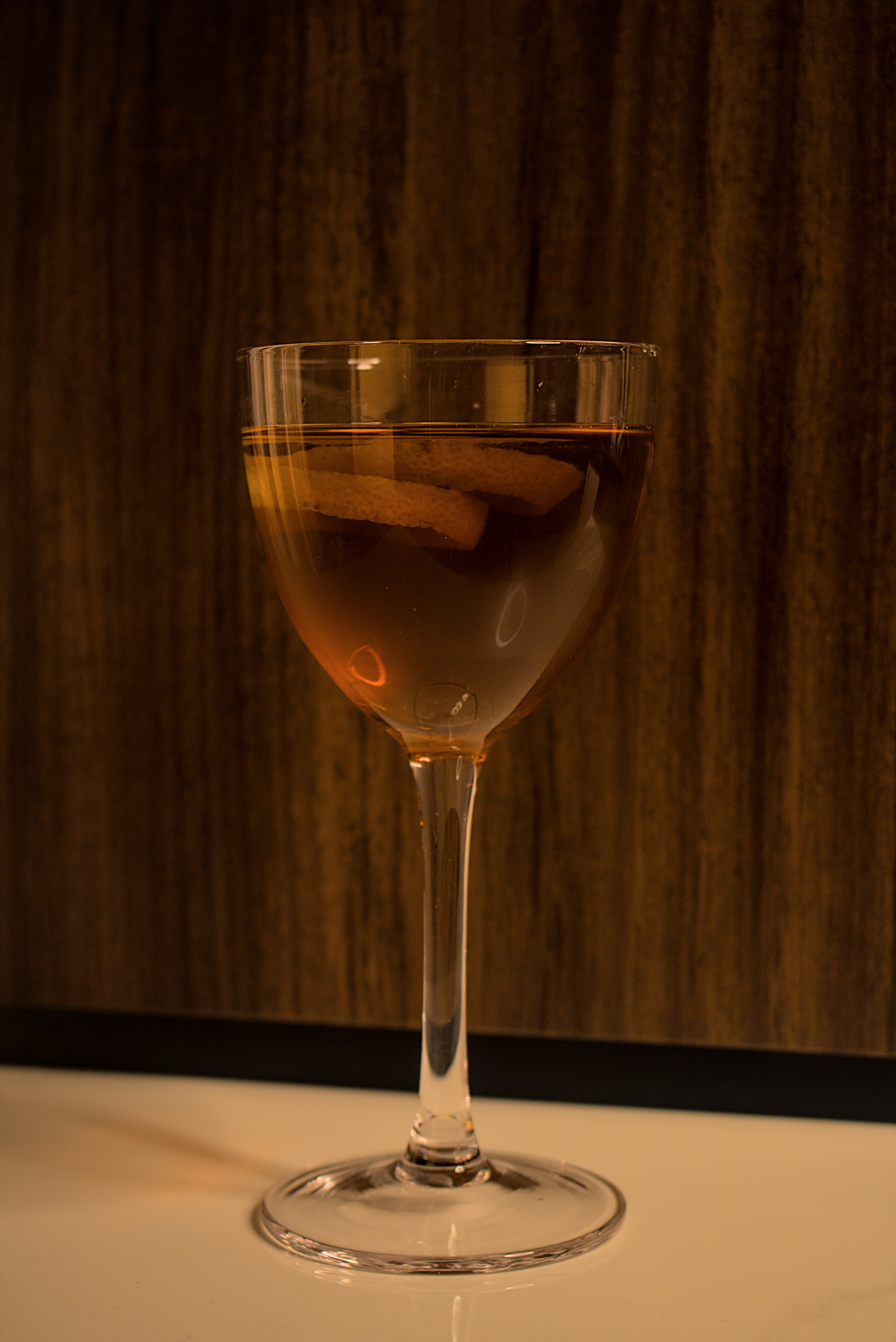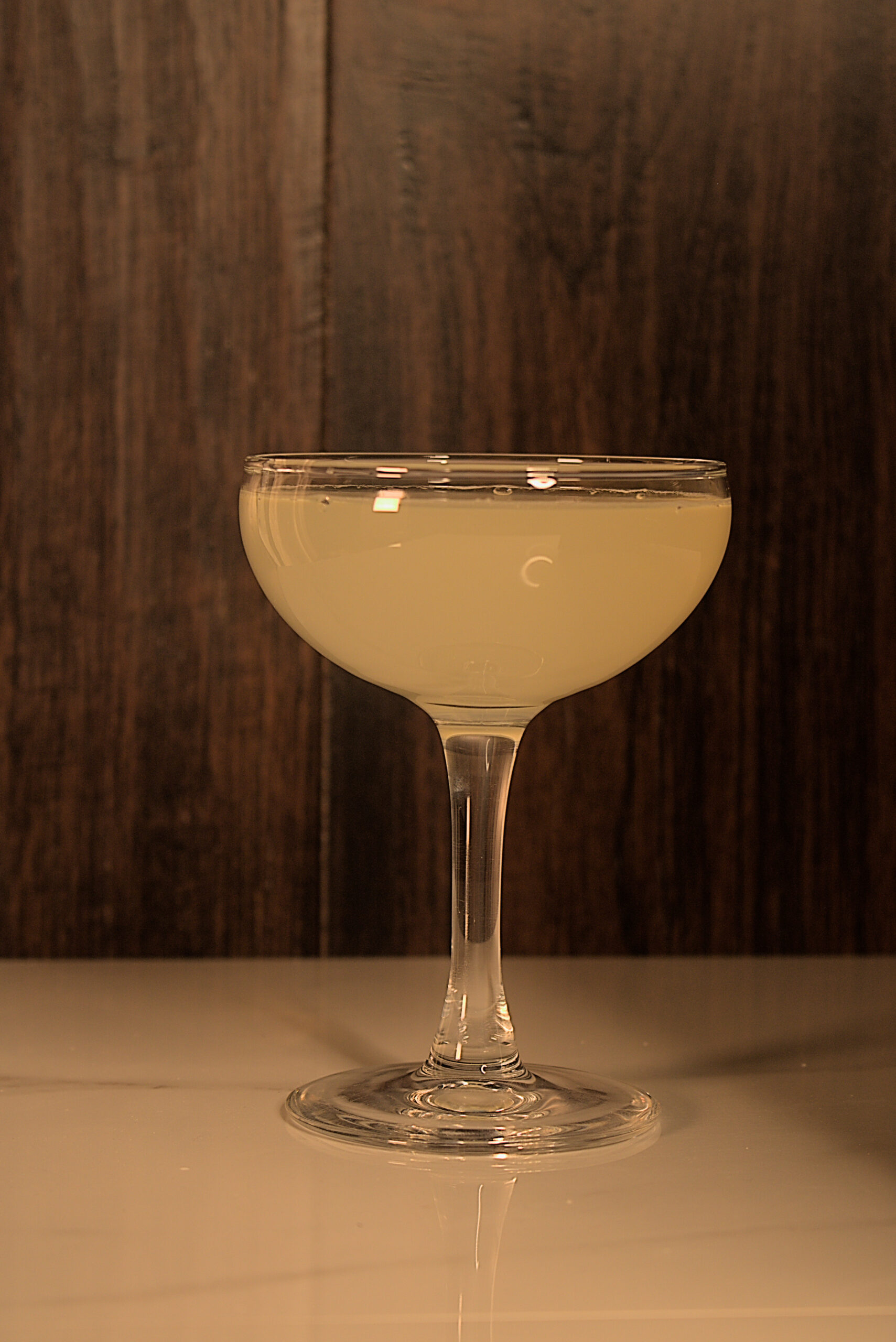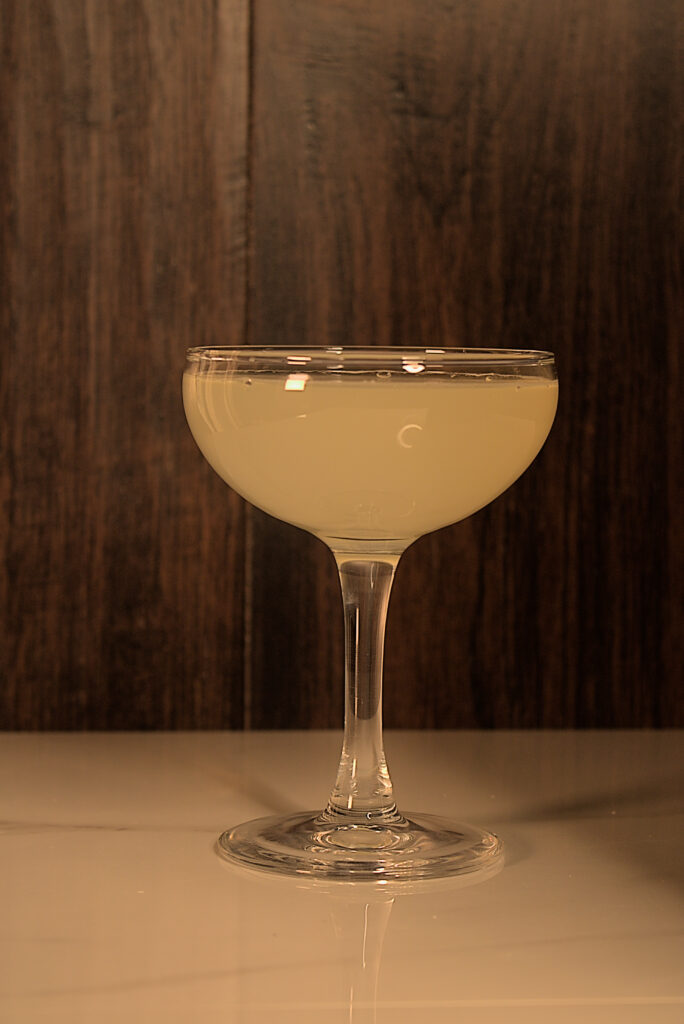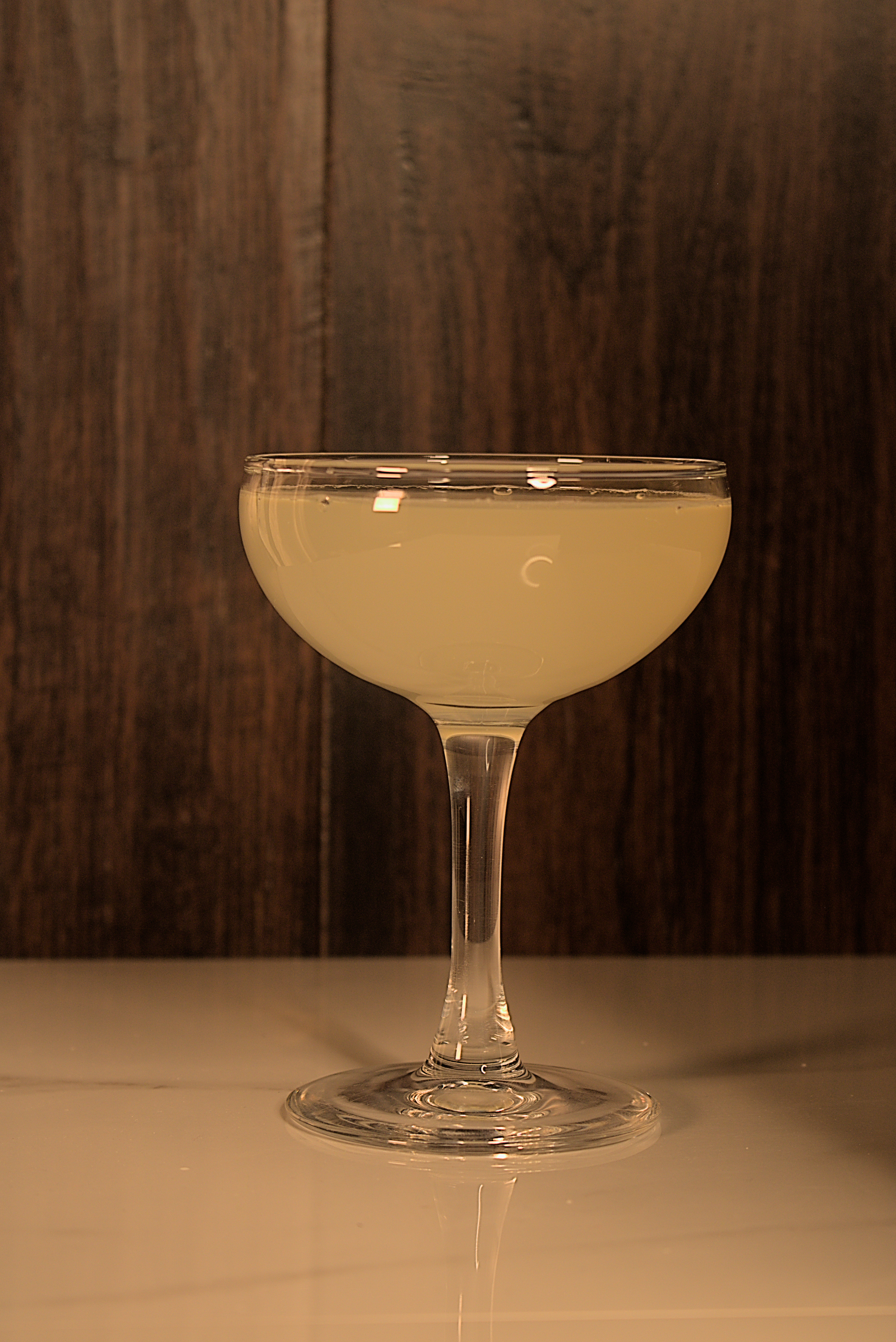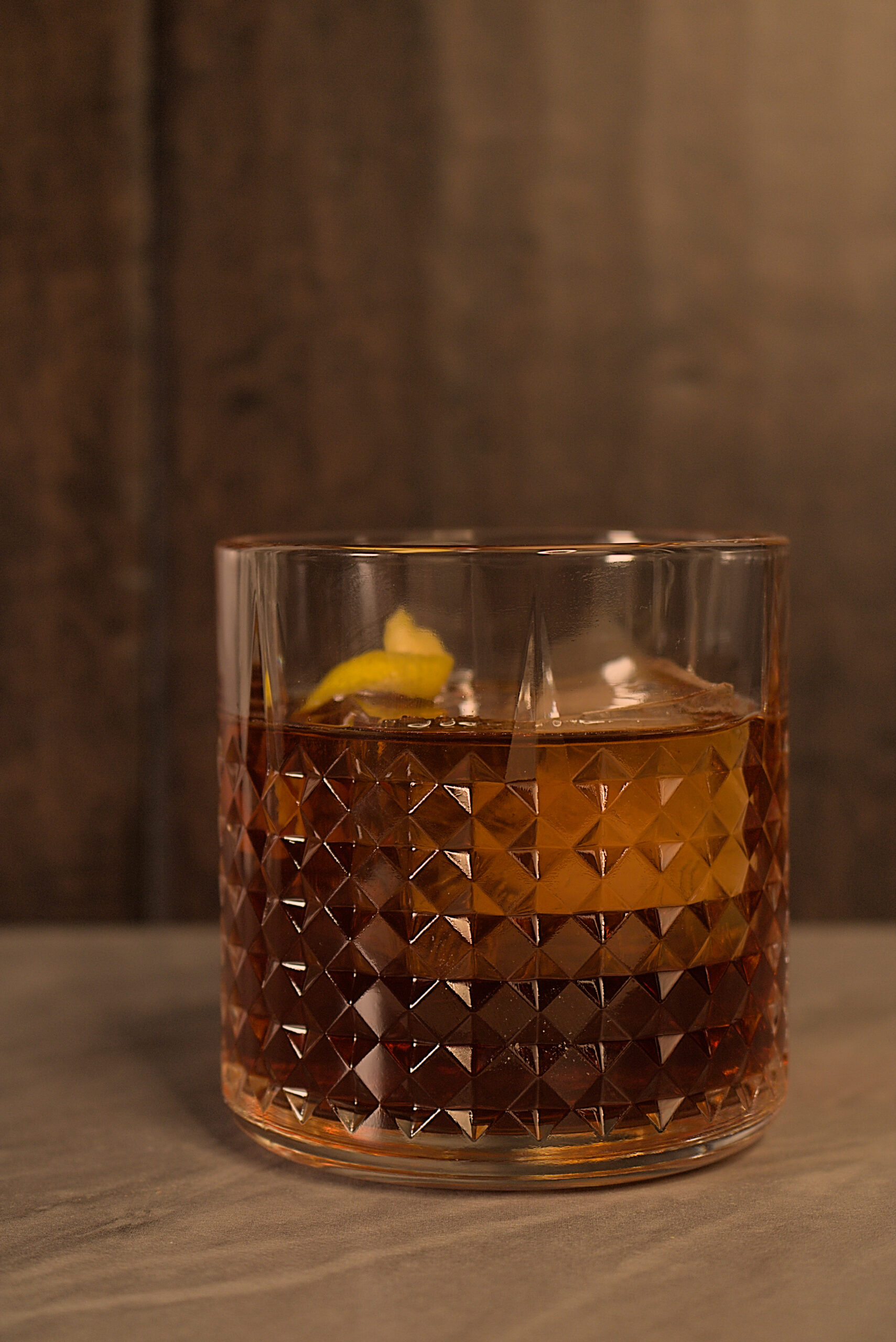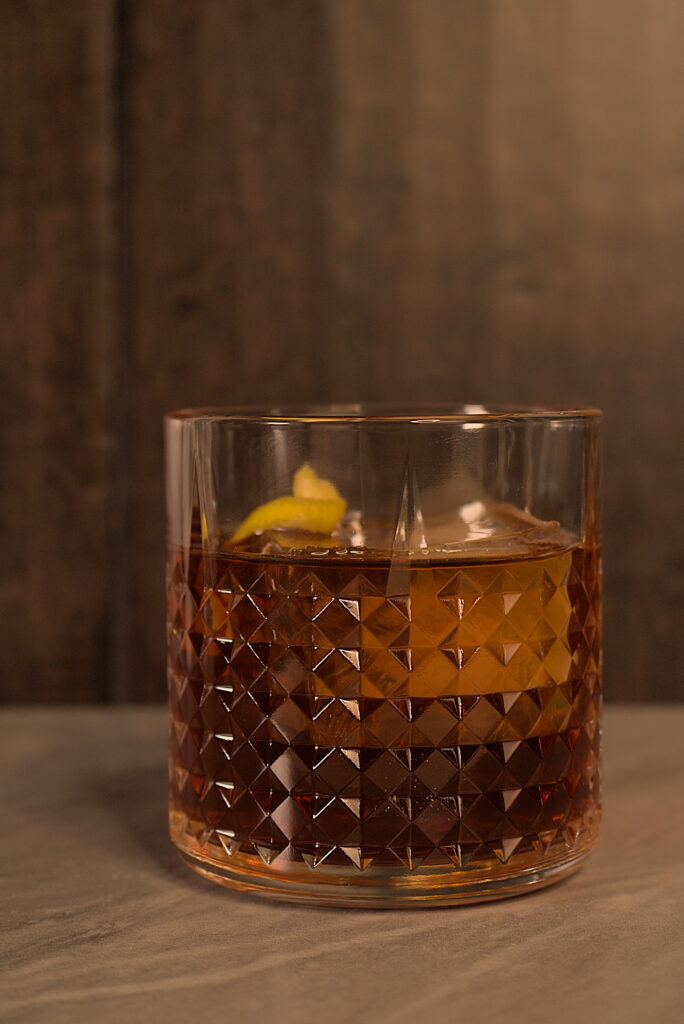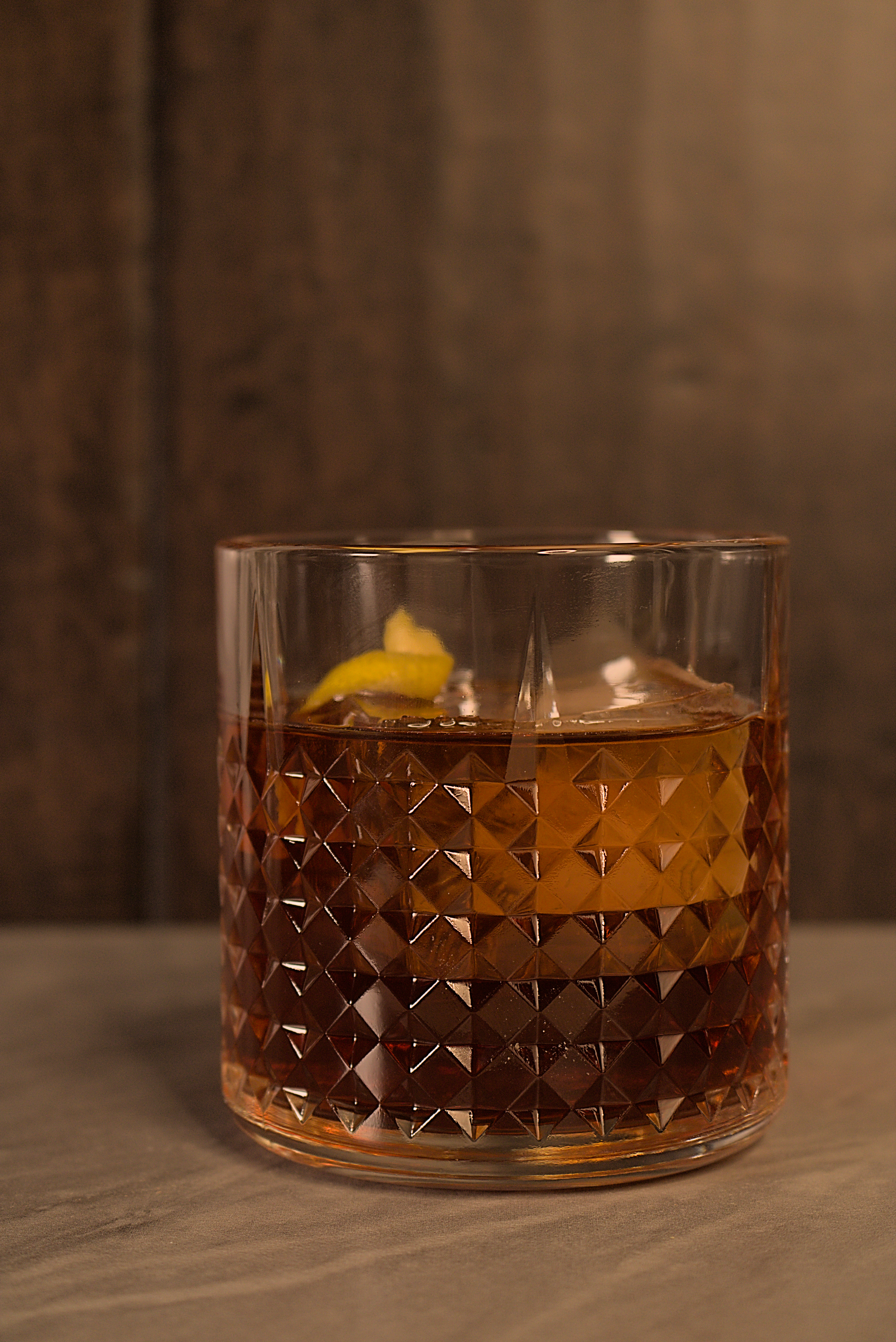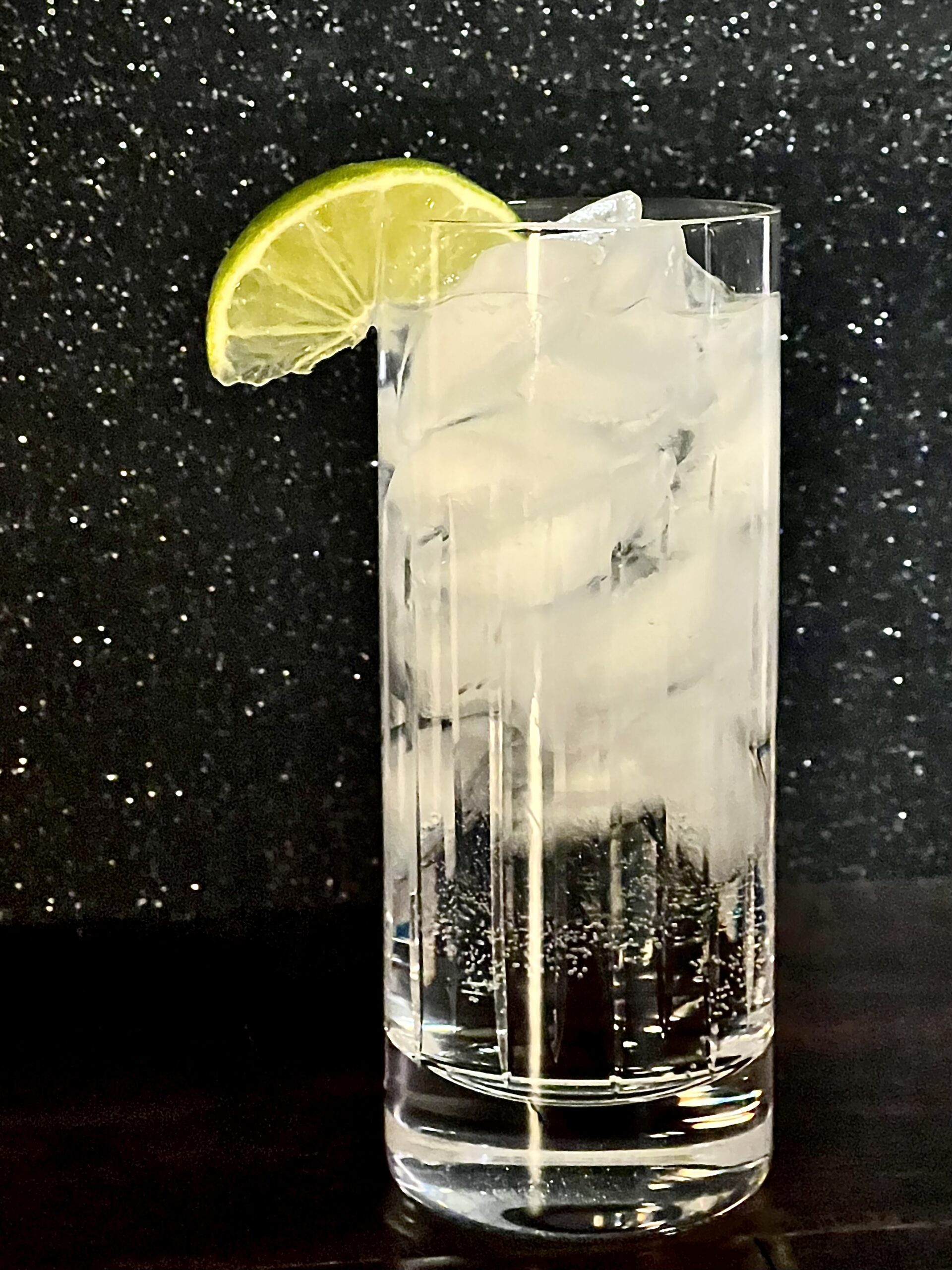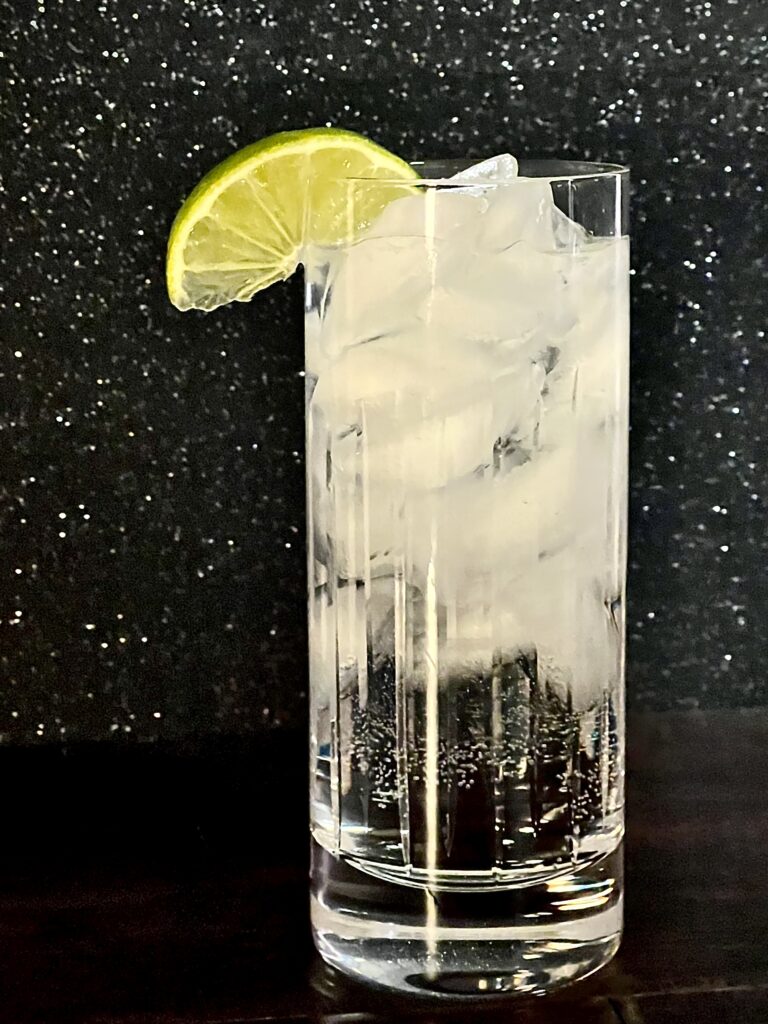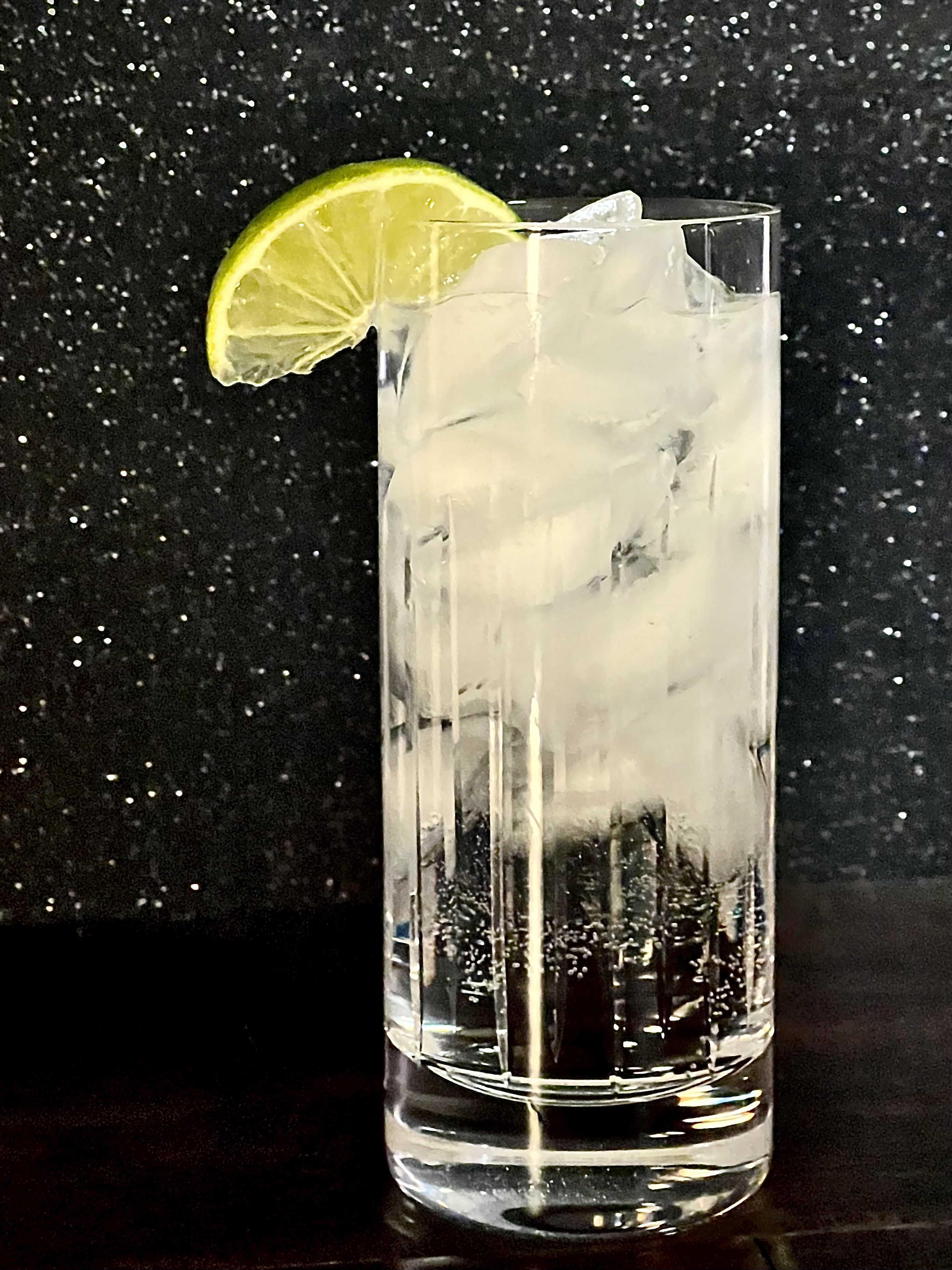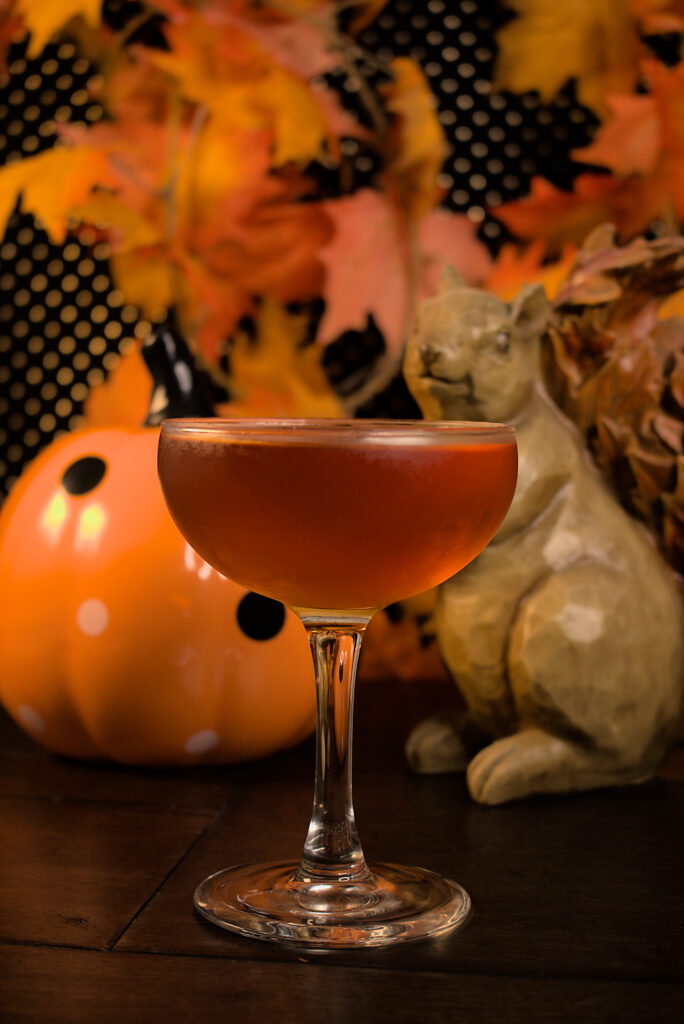
Wrapping up our quick run through apple brandy based cocktails for fall is the Widow’s Kiss. Originating in 1895 from George Kappeler’s Modern American Drinks, it combines apple brandy, Yellow Chartreuse, Benedictine, and Angostura Bitters to create a balanced fall cocktail. There’s a lot of recipe variation, but we’ve picked our favorite below.
Widow’s Kiss
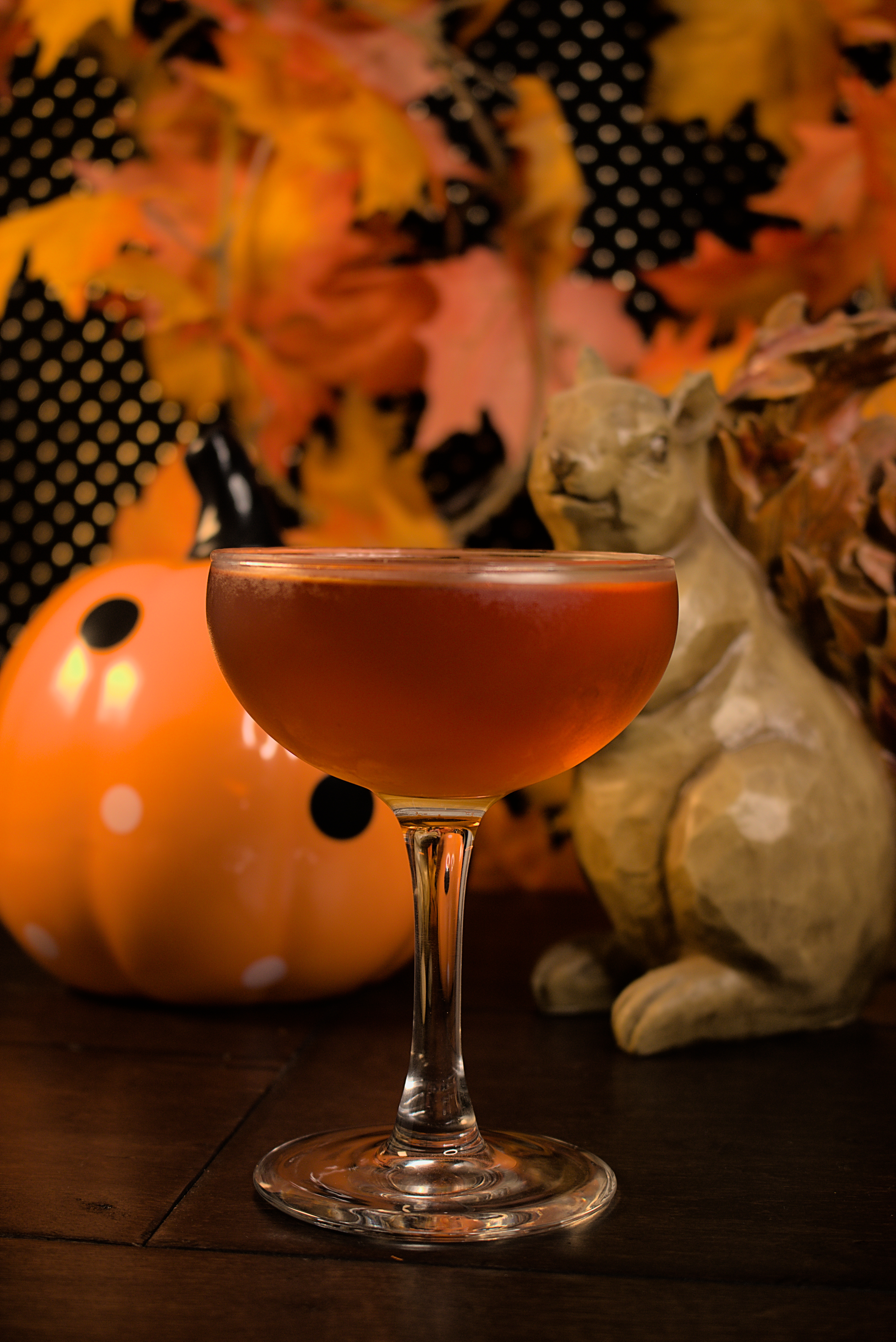
The Widow’s Kiss is balanced, apple and spice like, and complex. The layering of the spices from the bitters, Benedictine, and Chartreuse, combine with the herbal notes to wrap around the apple brandy notes. The net result is a very fall like, slightly sweet drink that has a luscious, silky texture. The finish lingers with apples and spice, making it lovely for fall.
Drink Notes & Recommendations
The Widow’s Kiss has a variety of specs that you can make it with. For our rendition, we’re chosen something in the middle. On the extreme end is the original recipe, which features a 2:1 ratio of Apple Brandy (Calvados, or Applejack) to both Yellow Chartreuse and Benedictine. This is plainly a sweet, sweet drink. On the other end, many modern riffs go down to a an old fashioned like 8:1 ratio or 2 oz to ¼ of Yellow Chartreuse and Benedictine. You can really make this drink anywhere in this spectrum, so adjust it per your taste.
- Apple Brandy – Any apple based liquor will compliment the flavors here, but we recommend something of higher quality like Laird’s Straight Apple Brandy. Any apple based liquor will work here include Calvados (like Domaine Dupont Calvados Fine Reserve) or Applejack (Laird’s Applejack)
- Yellow Chartreuse – The milder, more approachable Yellow Chartreuse is similar to it’s green counter part in that it’s fairly hard to substitute. In a pinch, consider a half portion of Strega, and increasing the simple by an 1/8.
- Benedictine – We really don’t have a substitute for this, but on the bright side, it’s widely available. Consider adding a bottle to your bar to unlock a number of other cocktails (Honey Moon Cocktail, De La Louisiane, Vieux Carre, Caprice, etc)
- Angostura Bitters – These are the classic aromatic bitters, and we recommend keeping a bottle around your bar. You can buy them from Amazon*, though your local grocer will probably carry them cheaper.
* – This link is an affiliate link which may result in us getting a partial commission from the sale. In 2022 we made $13.34 from affiliate links and made $6.93 so far in 2023, while we’ve spent well over $200 on just webhosting. Help us keep the lights on if you like our content, and please use our links!
